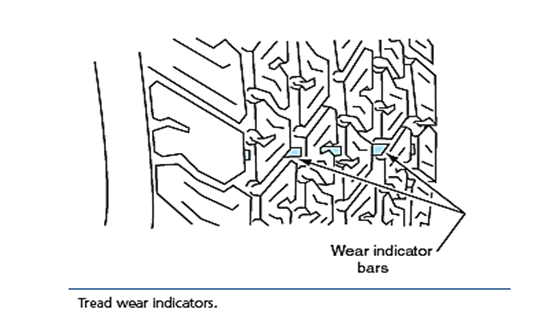Replacement Tires
Introduction:
Most tires have tread wear indicators built into the tread. When the tread wears a specific amount, the wear indicators appear as bands across the tread. Some car manufacturers recommend tire replacement when the wear indicators appear in two or more tread grooves at three locations around the tire.
Replacement tires:
If replacement tires have a different size or construction type than the original tires, vehicle handling, ride quality, speedometer/odometer calibration, and antilock brake system (ABS) operation may be seriously affected.
- When replacement tires are a different size than the originaltires, the vehicle ground clearance and tire-to-body clearance may be altered.
- Steering and braking quality may be seriously affected if different sizes or types of tires are installed on a vehicle.
- This does not include the compact spare tire, which is intended for temporary use. Many vehicles manufactured in recent years are equipped with antilock brakes (ABS).
- When different-sized tires are installed on these vehicles, the ABS operation is abnormal, which may result in serious braking defects.
Precaution for vehicle safety:

When selecting replacement tires, the following precautions must be observed to maintain vehicle safety:
1. Replacement tires must be installed in pairs on the same axle. Never mix tire sizes or designs on the same axle. If it is necessary to replace only one tire, it should be paired with the tire having the most tread to equalize braking traction.
2. The tire load rating must be adequate for the vehicle on which the tire is installed. Light-duty trucks, station wagons, and trailer-towing vehicles are examples of vehicles that require tires with higher load ratings than passenger car tires.
3. Snow tires should be the same type and size as the other tires on the vehicle.
4. A four-wheel-drive vehicle should have the same type and size of tires on all four wheels.
5. Do not install tires with a load rating less than the car manufacturer’s recommended rating.
6. Replacement tire ratings should be equivalent to the original tire ratings in all rating designations.
7. When combining different tires front to rear on a vehicle, and check the car manufacturer’s or tire manufacturer’s recommendations.